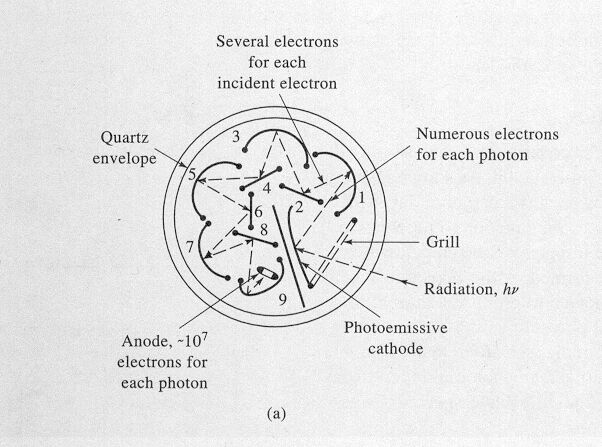
Schematic of a typical end-on PMT tube....

The photomultiplier tube (PMT) detects the signal output from the monochromator and converts it to an electrical signal that can be read by the virtual instrument. When photons exit the monochromator, they pass into the PMT and hit a photocathode. When the photons hit the photocathode, it emits electrons due to the photoelectric effect. These electrons are accelerated in a vacuum across a series of dynodes which are held at increasingly more positive voltages. Secondary electrons are produced each time an electron encounters a dynode. There is generally a factor of 4 multiplication for each electron (1 electron hitting the dynode equals 4 electrons emitted). This effect generates 4N (N is the number of dynodes) electrons for each N photoelectron emitted. The electrons collect at the anode where they are detected and produce a current output. The current is passed through cables to a device that can read the signal and convert it into useful information.

Schematic of a typical end-on PMT tube....
